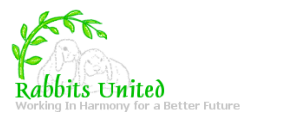LagomorphLion
Warren Scout
Hi All,
I was hoping you could give me some information about GAs in general. Kirsty my 9 year old dwarf lop has a small spur on one of his molars which he has had for a few years now and has been managing with it pretty well. Our vet looks at it at least every 3 months to keep an eye on it and has never seen any signs of redness/inflammation/cuts/etc (although this has only been with a scope). He has been a little bit on and off with his hay this year after completely going off it when he had a bladder sludge issue- which caused the spur to develop slightly. He is also just quite a fussy hay eating which doesn't help in the first place!! At the moment he's doing ok and putting on weight, as he lost a fair bit back when he had the bladder issue. Being 9 we (including our vet) have been more hesitant to do a dental because of the increased risks of the GA itself.
I always get in such a fluster whenever theres even just one tiny possible sign he's going off his hay so I want get and process information now so that if a time comes when we need to decide whether to perform one or not, I can make the best decision possible.
I'm just wondering how big the risks are now with anaesthetics, as i've heard a lot of conflicting advice. Our vet has said that some rabbits do just not respond to them well and pass away whilst they're under, is that true and a quite a regular thing? And how much can his age affect the risks too? Are conscious dentals an option?
Sorry this is all quite vague, I would really just appreciate any advice or experience you guys have had.
Thank you so much
Side note: He had his blood and urine tested back in February which came back clear, apart from some bacteria in his urine which he was treated for. (Just thought this might be some handy info)
I was hoping you could give me some information about GAs in general. Kirsty my 9 year old dwarf lop has a small spur on one of his molars which he has had for a few years now and has been managing with it pretty well. Our vet looks at it at least every 3 months to keep an eye on it and has never seen any signs of redness/inflammation/cuts/etc (although this has only been with a scope). He has been a little bit on and off with his hay this year after completely going off it when he had a bladder sludge issue- which caused the spur to develop slightly. He is also just quite a fussy hay eating which doesn't help in the first place!! At the moment he's doing ok and putting on weight, as he lost a fair bit back when he had the bladder issue. Being 9 we (including our vet) have been more hesitant to do a dental because of the increased risks of the GA itself.
I always get in such a fluster whenever theres even just one tiny possible sign he's going off his hay so I want get and process information now so that if a time comes when we need to decide whether to perform one or not, I can make the best decision possible.
I'm just wondering how big the risks are now with anaesthetics, as i've heard a lot of conflicting advice. Our vet has said that some rabbits do just not respond to them well and pass away whilst they're under, is that true and a quite a regular thing? And how much can his age affect the risks too? Are conscious dentals an option?
Sorry this is all quite vague, I would really just appreciate any advice or experience you guys have had.
Thank you so much
Side note: He had his blood and urine tested back in February which came back clear, apart from some bacteria in his urine which he was treated for. (Just thought this might be some handy info)

